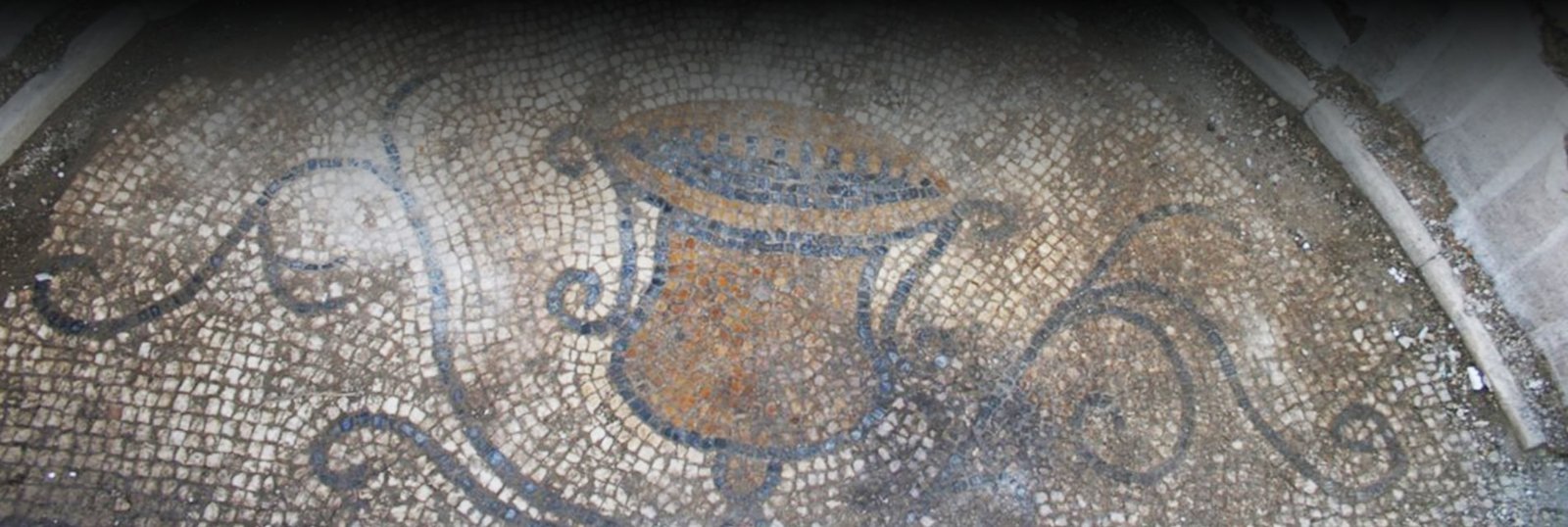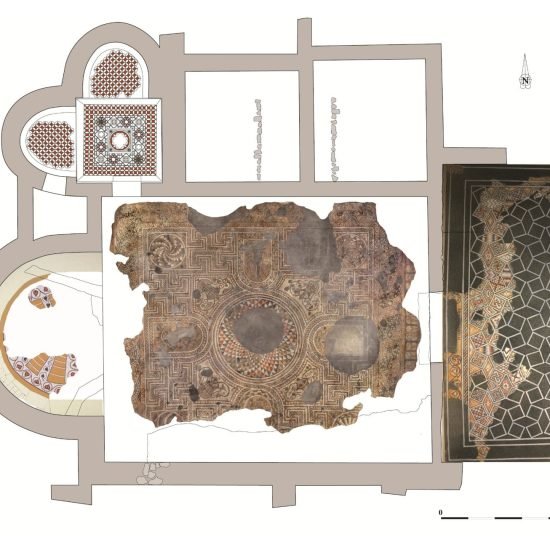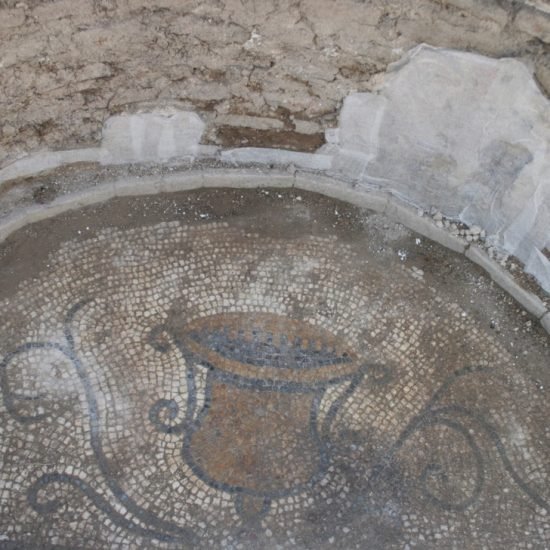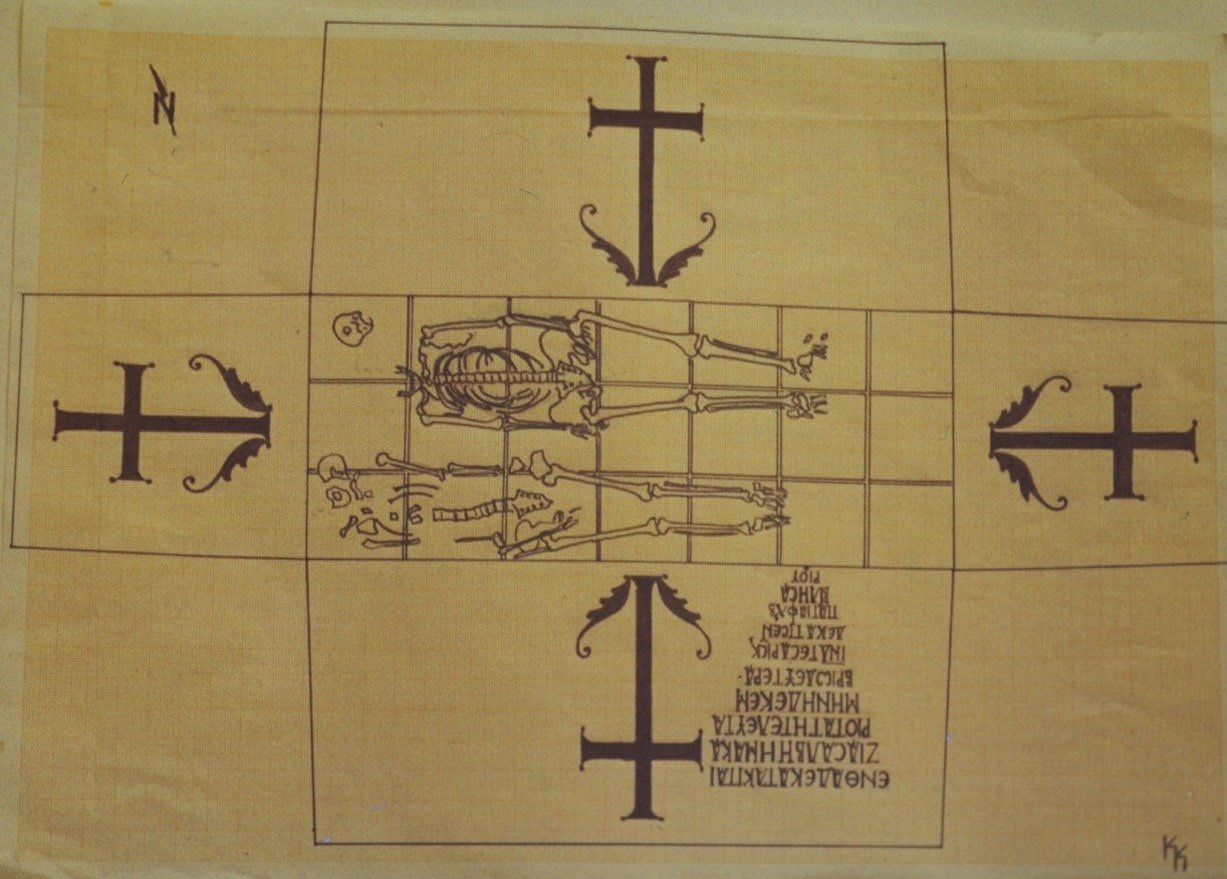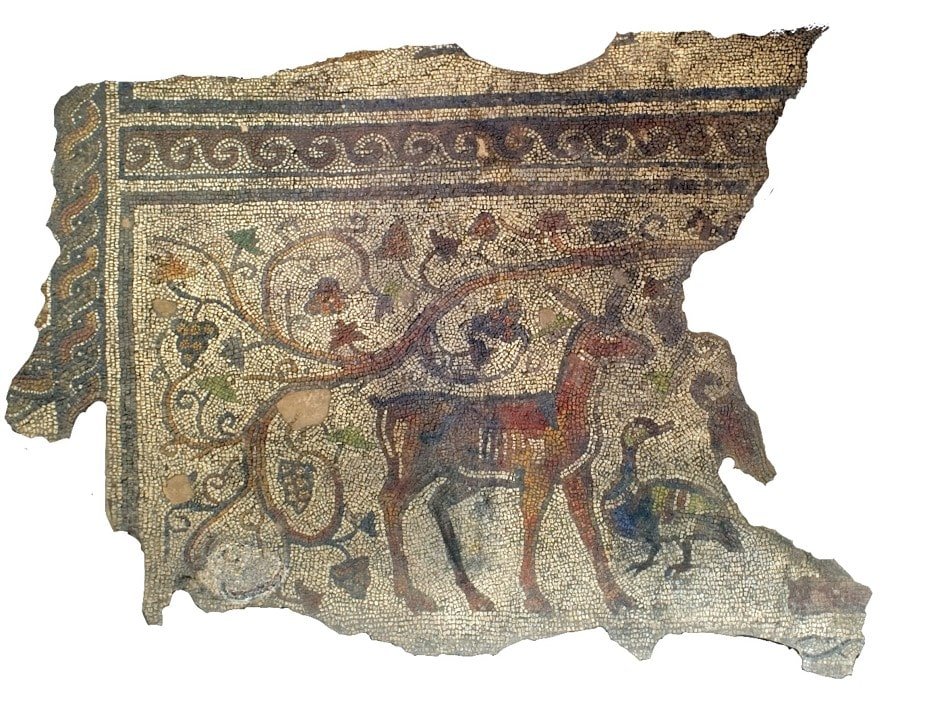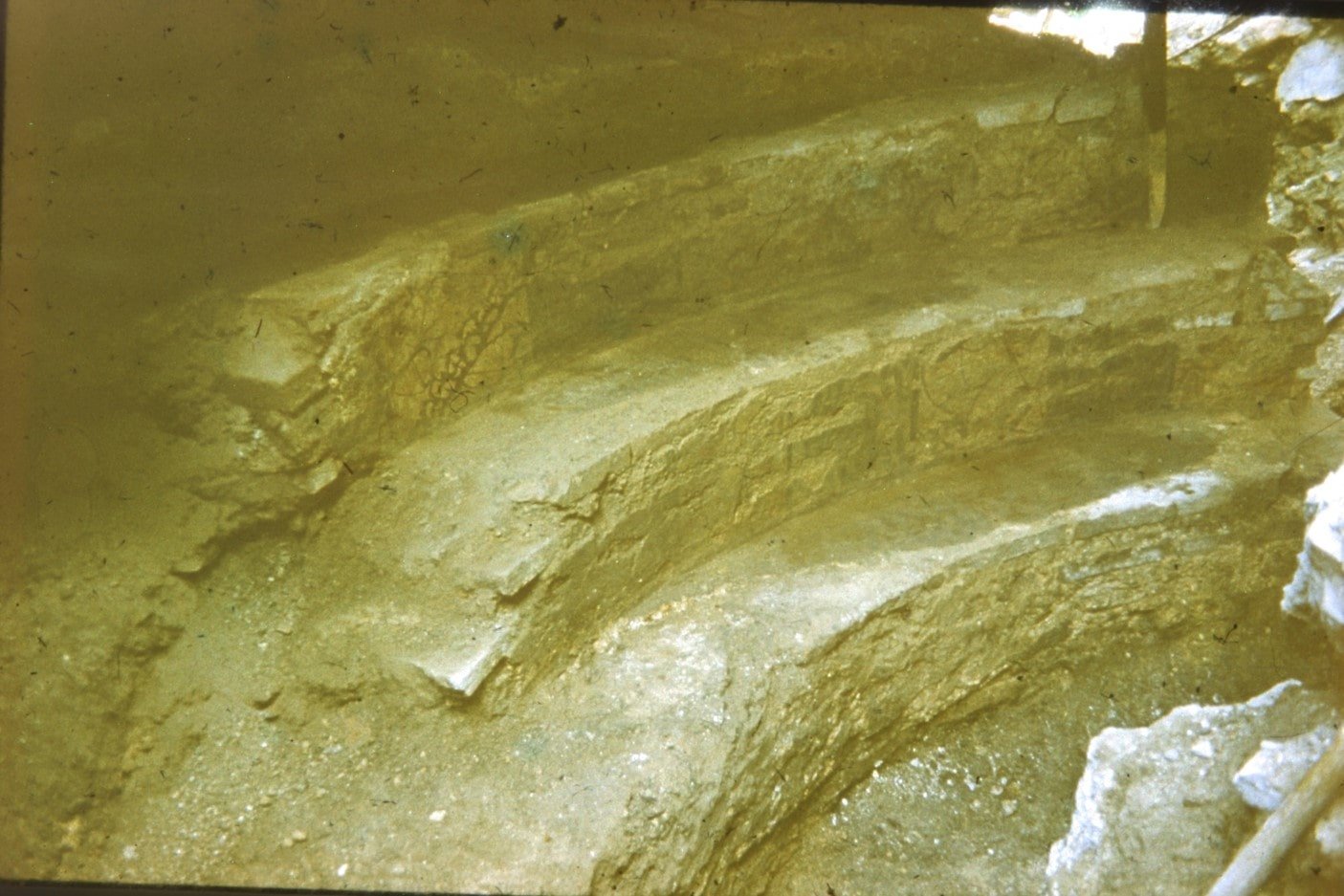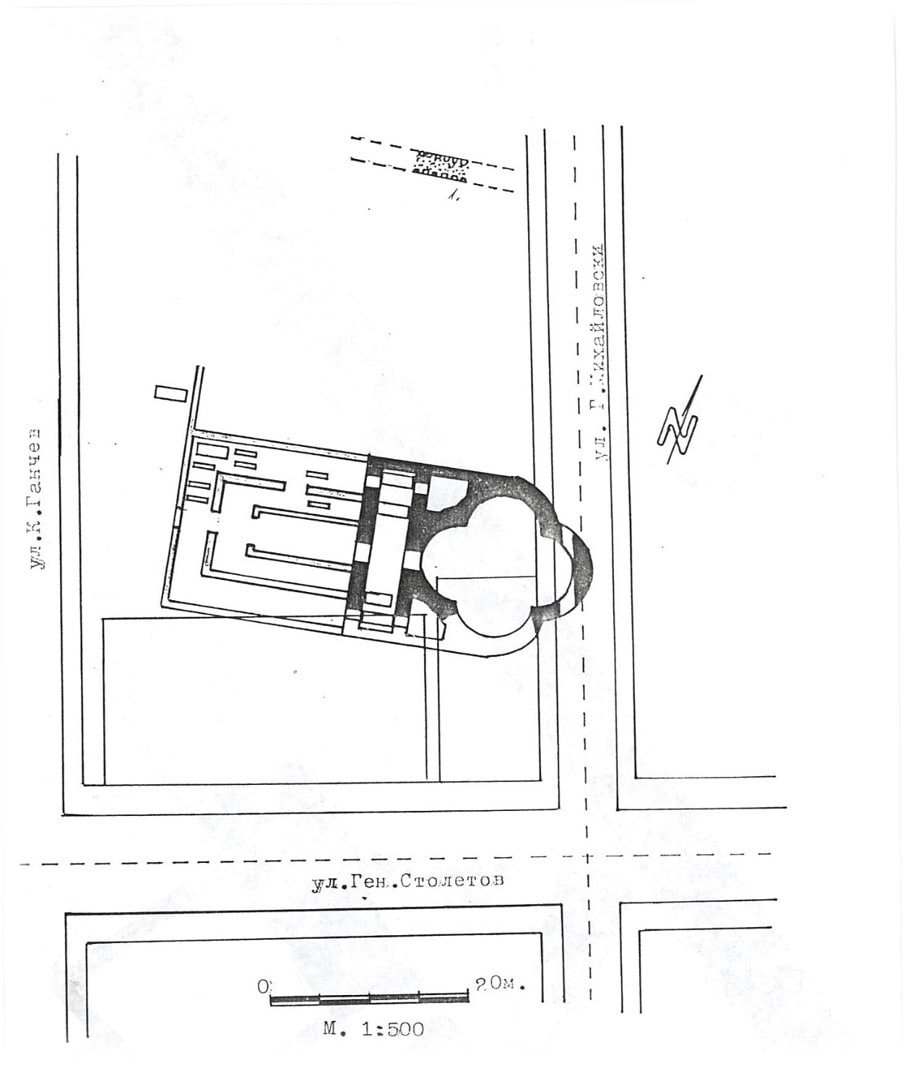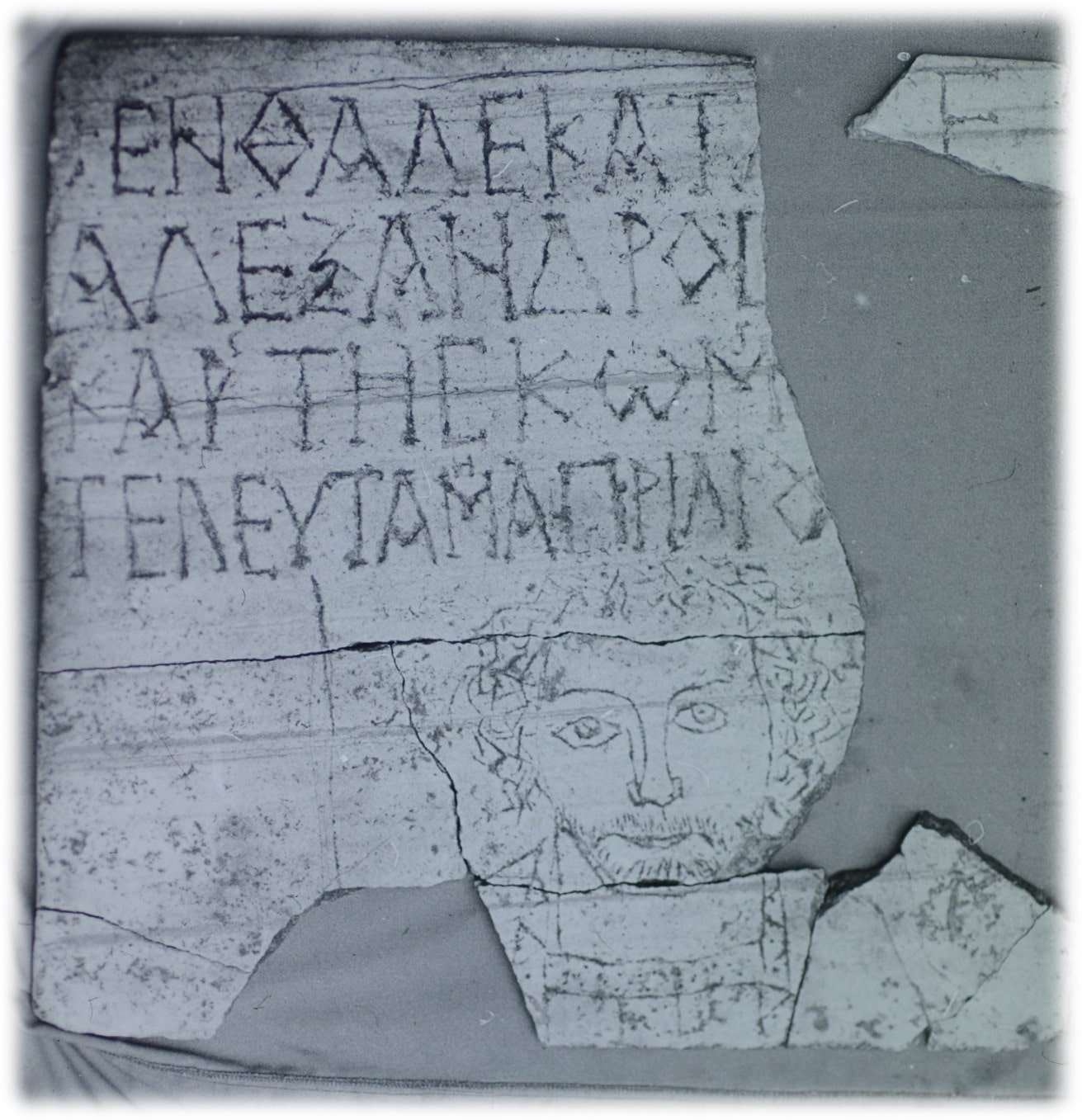Augusta Traiana
per person
An ancient town with many names, among which Beroe is often mentioned in the written sources. In 46 AD, the town entered the boundaries of the Roman province of Thrace. In 106 Emperor Trajan changed its name to Ulpia Augusta Traiana and gave it the right to self-government. The town grew to be the second largest and most important in the province after Philippopolis.
Augusta Traiana-Beroe became one of the foremost Christian centers on the Balkans. Ever since its inception, the Beroe Bishopric was autocephalous, subordinated directly to the Archbishop of Constantinople and remained so until the 11th century. Bishop Carpus, considered a disciple of Apostle Paul and one of the 70 apostles, is considered the first Bishop of Augusta Traiana. According to the sources, the town was certainly an Episcopal seat from the 4th century. In the 4th and 5th centuries, known bishops there were Eunomius from the late 4th century and Sebastian, a participant in the Council of Chalcedon in 451. The names of two more bishops – Cyrus and Timotheus – are also known.
The Late Antique authors Sozomenos and Theodoret of Cyrus provide information about the Bishop of Beroe Demophilus, a participant in the Council of Serdica in 343 on the side of the Arians, who were declared heretics by the Council of Nicaea in 325. Later, in 370-380 Demophilus was Archbishop of Constantinople. The importance of the town as a center of Arianism is testified by the fact mentioned by Sozomenos in his Historia Ecclesiastica that by order of Emperor Constantius II, the Bishop of Rome, Pope Liberius, was exiled to Beroe, as a supporter of the Nicene Creed.
The extensive life of the martyr saints tells about the existence of a monastery /ascetarion/ of 40 Christian virgins from Vereia (Beroe). Their faith and feat had a huge impact and many residents of the town, including the most prominent woman of Vereia – St. Celsina, turned to Christ. Their spiritual mentor was St. Ammunos the Deacon. The names of the 40 virgins and St. Celsina listed in the extensive life are known with precision. The place where the martyrs of Stara Zagora lived is most likely the Ayazmoto Park, which has been a holy place since ancient times, with a healing spring preserved until now. It is not by chance that the ruins of a dozen monasteries, hermitages and churches were revealed there.
FORMAL ANALYSIS
The Forum of Augusta Traiana also concentrated the spiritual life. An early Christian cult building was studied near the baths of the forum complex itself – the agora, at the Western Gate. Over the years, the floor mosaic that decorated the room interpreted as a vestibule of the thermal baths was studied in two stages. Subsequently, the vestibule was turned into a church and a five-step synthronon was built inside. It dates back to the mid 4th century. Other early Christian buildings are also registered in the area.
Bishop’s Palace of Beroe. The southwestern part of a representative peristyle building and part of the economic sector of the complex were studied. A large hall with an exedra to the west occupies a central place in the building. The building was the residence of the city governor, later converted into an Episcopal palace. The stylistic features of the mosaics decorating the floor date them to the 380s. In hall 2, the mosaics are preserved in situ, without demounting. In the vestibule and portico, the mosaics have been dismantled and exhibited in a specialized exhibition of the Mosaics of Augusta Traiana on the ground floor of the Post Palace in Stara Zagora.
Early Christian complex at the Military Terrain site. The earliest is the peristyle building from the 3rd-4th centuries, including a vast hall with an opus tessalatum floor mosaic covering 192 sq. m, and ending in the northwest with an apse with a piscine in the central part. In the first half of the 5th century, the building served as a church, the piscine was removed and a synthronon was constructed in the apse. The uncovered stone slabs with crosses, composing the altar screen, also belong to this period. After the Hun invasions in the mid 5th century, small dwellings were set up over the ruins of the building, and another church was built in the courtyard. To the late 6th century belongs an early Christian tomb with an inscription – epitaph, its walls coated with white mortar and painted with dark tile-red paint in the fresco technique. A Greek-type cross is inscribed on each wall. The epitaph contains 14 indiction which corresponds to 535-536.The orientation of the tomb is northwest-southeast in line with the orientation of the building. According to the researcher D. Yankov, in view of the results of the studies, the above-mentioned early Christian women’s monastery – ascetarion was located there.
Early Christian complex with a martyrium at General Stoletov and Donyo Pehlivanov Streets. About 75 meters east of the fortress walls of the Antique and Early Byzantine town of Augusta Traiana – Beroe an early Christian complex has been studied. It is composed of a four-conch church with a narthex and a later extension with an atrium and a portico; and also two necropolises from the 5th – 6th and 11th – 12th centuries. It is assumed that at least during the first phase of construction it was a monastery. Originally, the building was a proper four-conch mausoleum, distinguished by its monumental appearance – a high central dome and semi-domes above the conchs. The decoration was of frescoes, wall smalt mosaics and marble paneling. The architectural plan of the first period belongs to the centric cult buildings spread during the early Christian Age serving as a martyrium. During the restoration and conservation work, a marble sarcophagus was discovered in its eastern part. The martyrium building dates back to the second half of the 4th century. In the second half of the 5th century, the martyrium was expanded and turned into a cemetery church with an attached western wing. In the narthex of the martyrium, massive tombs were built, two of them with wall paintings. Both secular and spiritual persons, including children, were buried there. According to the epitaphs, some of them held high administrative positions and were prominent citizens. One of the tombs is decorated with crosses depicted with dark red paint and also an inscription in Greek. It is read by Renate Pillinger as the text of Psalm 131/132/14 according to the oldest translation of the Old Testament from Hebrew to Ancient Greek. Graves with quotations from psalms are mostly episcopal, which is why Pillinger argues that this is the burial of a bishop. The rest of marble slabs discovered with inscriptions in ancient Greek are of the maiden Anna, of the vicar Alexander, of whom there is also a portrait, and of Simon. The researchers assume that during the second period the church was a family one and preserved the remains of representatives of a rich family from Augusta Traiana – Beroe.
The church was burned down in the early 7th century during the great Avaro-Slavic invasions.
Today, a special protective structure has been built over the studied complex, which can be visited and the preserved remains to be viewed.
Early Christian monastery complex in the Trite Chuchura residence area. The monastery is located at the foot of a hill to the west of the modern Stara Zagora, next to an abundantly gushing spring, outside the fortress walls of the ancient town, along the road connecting Augusta Traiana with Philippopolis. A Late Antique layer was studied, including an early Christian three-nave basilica, with one semi-circular apse to the central nave, no narthex, an irregular polygonal basin and a brick-built tomb. According to the architectural features, it is assumed that the basilica was built because of the tomb, which would have a deep symbolic meaning. An intact burial with the head to the west was found in the tomb. A second basilica, three-nave, with a three-walled apse and a one-part narthex, was discovered about 8 m north of the first one. The researcher dates it to the second half of the 5th century, as the Old Metropolis in Nessebar. The baptistery was attached to the southwestern part of the basilica, built a bit later. South of the baptistery, the foundations of a second, larger pool were revealed, containing built-in clay pots to serve as hiding places for fish and mussels. In the narthex of Basilica No. 2, 5 graves were found, probably of clerics who performed priestly functions in these early Christian temples.
Roman house with a mosaic displaying a cosmogonic scene of the 4th century (Gen. Stoletov St. No. 55).
During the first stage of research (1955-1956), three rooms were discovered, one of which with a floor mosaic and part of a street – decumanus. The room with a floor mosaic is defined as a reception hall – tablinum, and to the west and east of it are the bedrooms. The second period of the building related to repairs and reconstructions, when the floor mosaic was arranged; it refers to the first half or mid 4th century. It is executed in the opus tesselatum and opus vermiculatum techniques, and presents the complete cosmogonic scheme: the aquatic world in the middle, with figures of fish, crabs, Nereids, arranged around an active piscine. On the sides, east and west, the terrestrial sphere is shown – through the fruits and game designated as xenia (a gift for the guests) and the annual seasons symbolized by pairs of animals. Finally the heavenly sphere follows. It displays the Paradise as a vine coming out of a large vessel – hydria, symbolizing the Fountain of Life. The souls of the faithful and the righteous are depicted as a doe and a duck. The composition is believed to have been borrowed from ancient Jewish prayers, and the scene on the floor mosaic is one of the earliest examples. The various attributes represented in the hexagons – pagan (Cornucopia, caduceus, club, xyston, swastikas) and early Christian (crosses and cups of wine) are indicative of the time of the validation of the new Christian religion. Both old pagan symbols were presented, in which a new meaning was put, as well as new Old and New Testament plots and symbols borrowed from the Eastern art. The mosaic is preserved in situ in a purpose-built protective building over the house.
In the vicinity of Stara Zagora, Medieval monasteries are registered in the areas of many villages dating mainly from the 12th – 14th c. The most significant is the monastery in the area of Borov Dol, associated with the legend of the conversion to Christianity of Khan Boris – Prince Michael (864). During his rule (853-889, 893), Beroe was an important Episcopal center. According to some of the researchers, Prince Boris I built the seventh large monastery – Lavra, dedicated to St. Theodore Tyron near Beroe.
MARIANA MINKOVA AND KATYA MELAMED
- AUGUSTA TRAIANA © PLAN. AND DRAWING, LUDMILA MANOLOVA: Reconstruction of the buildings at the Episcopal Palace site
- Altar screen slab with cross, Military terrain Site. PHOT. © Archives RHM Stara Zagora
- Christian tomb. Military terrain Site Drawing © Krassimir Kalchev
- Mosaic in the Christian church over the vestibule of the Baths of Augusta Traiana. PHOT. © Kamisheva and Karamanova-Zlatkova 2017
- Mosaic in the Roman house, detail. © PHOT. Archives RHM Stara Zagora
- Mosaic in the Roman house, detail © PHOT. Cv. Chetashki
- Mosaic, detail. Military terrain Site. © PHOT. Archives RHM Stara Zagora
- Synthronon on the forum on Augusta Traiana. © PHOT. Archives RHM Stara Zagora
- The Martyrium © PLAN. Archives RHM Stara Zagora
- Tombstone of Alexander at the Martyrion © PHOT. Archives RHM Stara Zagora
Información de la localidad
Augusta Traiana
| Other monuments and places to visit | The Roman forum and theatre in front of the Museum; the theatre is the second best preserved in Bulgaria |
| Natural Heritage | |
| Historical Recreations | |
| Festivals of Tourist Interest | |
| Fairs | |
| Tourist Office | Yes; visit stara zagora |
| Specialized Guides | Yes |
| Guided visits | Yes |
| Accommodations | Plenty of |
| Restaurants | Plenty of |
| Craft | |
| Bibliography | |
| Videos | |
| Website | Tripadvisor Stara Zagora |
| Monument or place to visit | Early Christian complex with a martyrium at General Stoletov and Donyo Pehlivanov Streets; Roman house with a mosaic displaying a cosmogonic scene of the 4th century (Gen. Stoletov St. No. 55); Mosaics from the Bishop’s Palace in situ in the ground floor of today’s Post Palace; Regional Historical Museum – Stara Zagora, organizing visits of all the above sites |
| Style | Remains of Late Antiquity churches and mosaics |
| Type | Byzantine church architecture |
| Epoch | 4th – 6th centuries |
| State of conservation | Good condition |
| Degree of legal protection | Regional Historical Museum – Stara Zagora |
| Mailing address | rim@rimstz.eu pr@rimstz.eu |
| Coordinates GPS | 42°25′32″N 25°38′05″E |
| Property, dependency | Regional Historical Museum – Stara Zagora |
| Possibility of visits by the general public or only specialists | General public visits |
| Conservation needs | Yes |
| Visiting hours and conditions | Tuesday – Sunday: 10 a.m. – 6 p.m. Closed on Monday |
| Ticket amount | Adults 5 BGN Different discounts according to the number of visitors, age, combined tickets, etc. |
| Research work in progress | |
| Accessibility | Good; access to the Museum for people with disabilities |
| Signaling if it is registered on the route | |
| Bibliography | Selected works: Буюклиев Хр., Калчев Кр. Раннохристиянска гробница със стенописи и надпис от Стара Загора In: Thracia antique 10 In memoriam prof dr Georgi Mihailov, Serdicae, 1996, 335-344. Калчев Кр. Проникване и разпространение на християнството в Августа Траяна-Берое (дн. Стара Загора) през IV-V в. (по археологически данни) In: Криптохристиянство и религиозен синкретизъм на Балканите, София, 2002, 31-33. Янков Д. Християнското култово строителство в Августа Траяна-Берое през античността и средновековието. ИМЮИБ (Bulletin des Musees de la Bukgarie du Sud-Est), XVI, 1993, 139-153. N.B. All articles in Bulgarian are accompanied by summaries in English or French. Analecta Bollandiana. XXXI, 194. Kamisheva M., Karamanova-Zlatkova R. Mosaic pavements in the thermae of Augusta Traiana (Preliminary report). - In: Studia Academica Šumenensia, 2017, 4, 169-180. Pillinger R. J., Lirsch. A., Popova V. Corpus der spätantiken und frühchstlichen mosaiken Bulgariens, 2015. Popova V. Monuments from the tetrarchy and the reign of the Constantinian dynasty in Bulgaria. - In: Ниш и Византиja, XIV, 2016, 173-174. Popova V. On the date and the interpretation of the complex at the Southwestern gate of Augusta Traiana/Beroe Studia Academica Šumenensia, 2017, 4, 57-96. Topalilov I. The mosaic pavements in Philippopolis and Augusta Traiana from Constantine I till Theodosius I. A short review. – Cercetãri Archeilogice 2022, XXIX, 259-286. |
| Videos | |
| Information websites | visitstarazagora.bg |
| Location | Stara Zagora |


